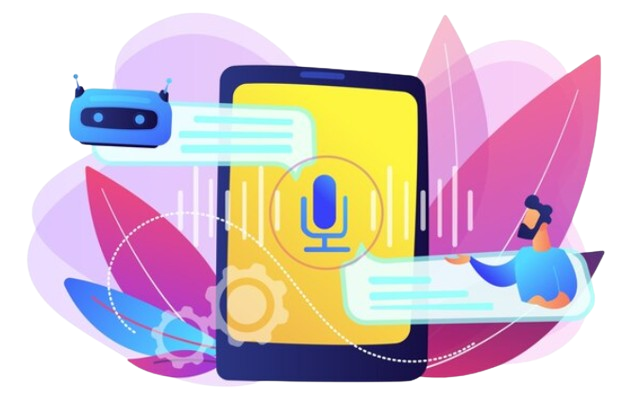Voice interfaces in IoT are not just a technological advancement; they are a step toward a more sustainable and user-friendly future. As technology continues to evolve, it will contribute to more efficient and eco-friendly lifestyles. Embracing voice technology in your IoT applications means you’re not just following a trend; you’re shaping the future.
The Internet of Things (IoT) has revolutionized the way we interact with technology. Connecting everyday objects to the Internet and enabling them to communicate with each other and with us. While the growth of IoT has been impressive, another technology has been gaining prominence and changing the way we interact with these smart devices – voice interfaces. In this blog post, we’ll explore the impact of voice interfaces on IoT. And how they enhance user interactions with a wide range of smart devices.
The Marriage of IoT and Voice Technology
Voice interfaces, powered by technologies like speech recognition and natural language processing, allow users to communicate with IoT devices through spoken commands. This hands-free and natural mode of interaction has a significant impact on various IoT applications. Including smart homes, connected cars, healthcare, and industrial IoT.

Key Benefits of Voice Interfaces in IoT:
- Simplicity: Voice commands make controlling IoT devices as simple as having a conversation. Users don’t need to learn complex user interfaces or memorize commands.
- Accessibility: Voice interfaces provide a more accessible way for people with disabilities to interact with technology.
- Convenience: With voice, users can control devices while their hands are busy or when it’s more convenient to speak than to use a touchscreen.
- Safety: In applications like connected cars, voice interfaces enhance safety by allowing drivers to keep their eyes on the road while interacting with various systems.
Enhanced User Experiences with Voice Interfaces
- Smart Homes: A Seamless Lifestyle
In smart homes, voice interfaces have transformed the way we control lighting, thermostats, entertainment systems, and security devices. Users can simply say, “Turn off the lights” or “Set the thermostat to 72 degrees,” making everyday tasks more convenient and efficient. This level of control leads to energy savings and, by extension, more sustainable living.
- Connected Cars: Keeping Eyes on the Road
Voice interfaces in connected cars provide drivers with hands-free control over navigation, music, and communication. This not only enhances safety by reducing distractions but also creates a more user-friendly driving experience. Furthermore, the data collected by voice interfaces can contribute to improvements in traffic management and road safety.
- Healthcare: Improving Patient Care
Voice technology in healthcare IoT allows patients to interact with medical devices and receive information or reminders via voice commands. This can be especially valuable for elderly patients or those with limited mobility. It not only enhances patient care but also eases the burden on healthcare professionals.
- Industrial IoT: Streamlined Operations
In industrial IoT, voice interfaces are being used to streamline operations. Workers can use voice commands to access important information or control machinery, increasing efficiency and safety. This technology contributes to reducing waste and improving productivity in manufacturing and other industries.
The Role of Artificial Intelligence
Artificial intelligence (AI) plays a crucial role in the effectiveness of voice interfaces in IoT. AI-driven speech recognition and natural language understanding enable devices to interpret and respond to voice commands accurately. As AI continues to advance, the capabilities of voice interfaces will only improve. With better AI, these interfaces can adapt to individual users and learn from their preferences, making interactions even more intuitive.
The Future of IoT and Voice Interfaces
The integration of voice interfaces in IoT is expected to continue growing. As more devices become voice-enabled, the range of applications will expand, offering users new and innovative ways to interact with their surroundings. Imagine a future where your entire home or workplace is seamlessly controlled by your voice, creating a more sustainable and efficient environment.
The potential applications are limitless. From voice-controlled kitchen appliances that help reduce food waste to voice-activated environmental monitoring systems that contribute to sustainability efforts, the combination of IoT and voice technology opens up new possibilities for businesses and individuals alike.
Conclusion
The combination of voice interfaces and IoT is transforming the way we interact with smart devices, making it more natural, convenient, and accessible. Whether it’s controlling your home’s lighting, navigating in your car, receiving medical information, or managing industrial operations, voice technology is enhancing user experiences in various IoT applications.
At Tanbits, we understand the importance of seamless IoT solutions that provide users with enhanced experiences. Our IoT services can help you leverage the power of voice interfaces and other cutting-edge technologies to create IoT applications that stand out. By choosing the right IoT and voice integration, you can ensure that your users enjoy a more intuitive and engaging interaction with their smart devices.
Voice interfaces in IoT are not just a technological advancement; they are a step toward a more sustainable and user-friendly future. As technology continues to evolve, it will contribute to more efficient and eco-friendly lifestyles. Embracing voice technology in your IoT applications means you’re not just following a trend; you’re shaping the future.
BACK










